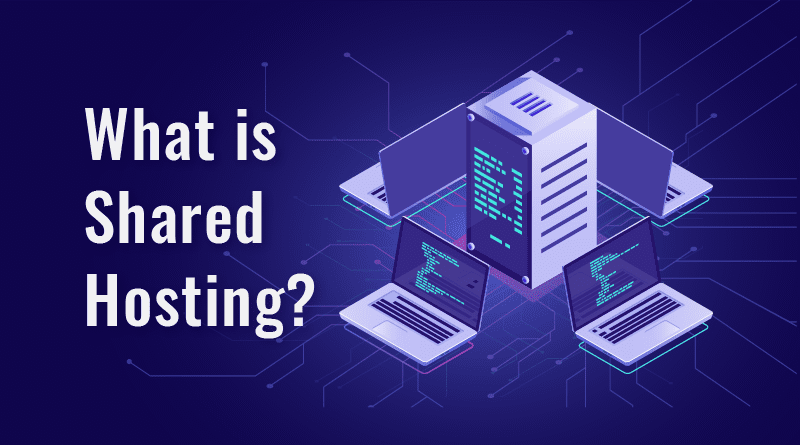What is AWS? Explicated by Digimagg
What is AWS? Simply put, it's the leading global provider of cloud services, dominating the market with the largest share in cloud computing.

What exactly is AWS? In short, it stands as the foremost global provider of cloud services. AWS holds the largest market share in cloud computing, nearly doubling that of its closest competitor, Microsoft Azure. Following behind are Google Cloud and IBM Cloud. Before delving into AWS's platform and offerings, let's briefly touch on the concept of cloud computing and cloud service providers.
Cloud computing and cloud service providers
Cloud computing involves the provision of on-demand computing resources such as computing power and storage. Unlike conventional computing, users of cloud computing services are relieved from the responsibility of managing the underlying physical infrastructure.
Cloud computing is often more cost-effective than traditional computing, contributing to its widespread adoption. Additionally, it offers greater flexibility and robustness, enhancing both flexibility and security aspects.
While certain features such as storage and database creation are standard across all cloud platforms, others like content caching vary based on the geographical location of usage.
The cloud market, which encompasses cloud computing services, is experiencing significant growth. Cloud computing can be viewed as the next strategic progression in the evolution of the internet.
The era where organizations relied on costly and rigid physical servers for their operations is no longer predominant. Nowadays, individuals, students, professionals, and organizations of all sizes utilize cloud computing.
Companies that provide cloud services are known as cloud providers. Alongside the prominent trio of Amazon Web Services, Google Cloud, and Microsoft Azure, other notable players in the cloud market include Alibaba Cloud, IBM Cloud, Oracle, Rackspace Cloud, Salesforce, SAP, and VMWare.
Amazon Web Services (AWS) - The Unquestioned Leader in Cloud Computing!
AWS, a subsidiary of the Amazon conglomerate, dominates the cloud services sector. As its name suggests, Amazon Web Services focuses on cloud computing. It caters to a wide range of users, from individuals to governments, offering high levels of flexibility, reliability, and security. AWS provides various services including analytics, application services, computing power, database management, deployment, developer tools, IoT solutions, management tools, mobile services, networking, security features, storage solutions, workload management, and more. Over time, AWS has established a strong presence in the cloud computing market, becoming a prominent subject in educational technology discussions and advertisements.
The Evolution of Amazon Web Services
AWS embarked on its journey in July 2002, aiming to monetize its surplus Infrastructure as a Service (IaaS). The inaugural AWS public service, SQS, debuted in November 2004, with a full-fledged launch occurring in March 2006. This year also saw the introduction of two groundbreaking services, S3 and EC2. Subsequently, AWS expanded its offerings with milestones such as the introduction of VPC in 2009, Route 53 and SNS in 2010, and Elastic Beanstalk in 2011. From 2012 onwards, AWS began hosting significant events like AWS re:Invent and AWS Summits, focusing on customer feedback, product announcements, and emerging technologies. The AWS certification program debuted in April 2013, evolving into a comprehensive catalog over time. In 2014, AWS Partner Network (APN) was launched to facilitate collaboration and growth for AWS-based organizations. By 2016, AWS prioritized aiding customer migration to its platform, leading to the launch of an automatic scaling service in January 2018. In 2019, AWS surpassed $35 billion in revenue, solidifying its position as a key player in the cloud computing realm.
Benefits of Utilizing Amazon Web Services
There are numerous advantages to utilizing AWS, whether you're an individual, professional, or organization. Here are some of the key benefits:
- Rapid Scalability: With on-demand infrastructure, AWS allows for rapid scaling to adjust to workload demands within minutes, ensuring optimal resource utilization.
- Platform Agnosticism: AWS provides the flexibility to select architectures, databases, operating systems, and programming languages according to your preferences, often without concerns about compatibility issues.
- Cost-effectiveness: AWS services operate on a pay-as-you-go model, allowing you to pay only for what you use. This means lower costs for minimal usage and reduced unit costs for higher usage. Plus, you pay nothing when services are not in use.
- Enhanced Security: AWS data centers and services adhere to rigorous multi-layer physical and operational security protocols. Regular audits ensure continuous maintenance of high-level infrastructure security.
- Reliability and Resilience: AWS products offer high reliability, supported by a robust and secure infrastructure, ensuring consistent and dependable service delivery.
Is AWS flawless? Certainly not. Despite its numerous strengths, the cloud computing service has a few drawbacks that are worth considering. These include:
- Data access is impossible without internet connectivity.
- Resource utilization is limited based on the region.
- There are certain security constraints.
- Occasional glitches and issues may arise, although they are rare.
- Technical support incurs additional costs.
AWS Services
Amazon Web Services provides an extensive array of cloud computing solutions, boasting a catalog of over 200 services as of 2021. With this vast selection, AWS caters to a wide range of cloud-based needs, whether personal, professional, or philanthropic.
Given the extensive variety of AWS services available, it's impractical to delve into each one in detail here. However, the following list outlines 15 of the top AWS offerings:
1.Amazon EC2 (Elastic Compute Cloud)
Initially launched in August 2006, Amazon Elastic Compute Cloud (Amazon EC2) provides scalable computing capacity and stands as one of the earliest offerings from Amazon Web Services. With Amazon EC2, users can rapidly develop and deploy applications in a cost-effective manner. This service allows users to rent virtual computers to run applications tailored to their specific needs.
2.Amazon Elastic Beanstalk
Initially released in January 2011, Amazon Elastic Beanstalk simplifies the deployment of services and web applications for developers, eliminating the need for managing infrastructure. Acting as an orchestration service, AWS Elastic Beanstalk integrates with various AWS services, including CloudWatch, EC2, ELB, S3, and SNS. It supports applications built with different programming languages like .NET, Java, PHP, and Python.
3. Amazon DynamoDB
Initially introduced in January 2012, DynamoDB represents Amazon's take on NoSQL database technology. As a fully-managed service, it caters to document data structures and key-value stores. NoSQL databases adhere to the CAP Theorem, making them suitable in scenarios where a flexible schema is required, schema definition is unavailable, temporary data storage is needed, or unstructured data must be accommodated.
4. Amazon EBS (Elastic Block Store)
Initially launched in August 2008, Amazon EBS serves as a solution for storing persistent data. It provides raw block-level storage that can be attached to EC2 instances, facilitating seamless and cost-effective data movement across different EC2 instances. While multiple volumes can be mounted on a single instance, each volume can only be attached one at a time. Amazon EBS offers various options categorized into two types: SSD-backed storage for transactional workloads and disk-backed storage for throughput-intensive workloads.
5. Amazon Kinesis
Initially launched in November 2013, Amazon Kinesis is designed to manage vast quantities of real-time, streaming data from sources such as social media feeds and log events. It serves as a platform for collecting, analyzing, and processing data, with additional support for IoT telemetry data.
6. Amazon Glacier
7. Amazon Lambda
Launched in November 2014, Amazon Lambda eliminates the need for managing servers by enabling users to run code without relying on traditional server infrastructure. Billing is based on the compute time required to execute the code. Amazon Lambda is cost-effective compared to alternative services because it charges only for the duration when the code is running. It supports code written in Java, NodeJS, Python, and other languages supported by Amazon Linux.
8. Amazon KMS
Introduced in 2014, KMS stands for Key Management Service, which administrators utilize to protect data from cyber threats, hacking, and other malicious activities. With Amazon KMS, users can generate, remove, and oversee AWS keys used for encrypting data stored across AWS databases and services. Employing 256-bit encryption, this AWS security feature ensures data protection.
9. AWS DataSync
Introduced in November 2018, AWS DataSync simplifies the transfer of data between on-premises storage and Amazon S3, as well as to and from Amazon EFS and Amazon FSx. This service automates data transfers, allowing for quick transfer of terabytes of data over the internet or AWS Direct Connect links.
In the battle against COVID-19, technology, including cloud computing, has become crucial. Despite the pandemic slowing technological advancements, the need for technology to combat the virus has increased dramatically. AWS, as a leader in cloud computing, has become more essential than ever in this fight against the SARS-CoV-2 virus.
10.Amazon VPC (Virtual Private Cloud)
Launched in September 2009, Amazon VPC is Amazon's rendition of the Virtual Private Network (VPN). This AWS service ensures that data stored on Amazon servers remains inaccessible to unauthorized individuals and outsiders. It achieves this by establishing a VPN, which is a logically isolated segment within the AWS cloud.
11. Amazon SQS (Simple Queue Service)
Introduced in 2004, Amazon SQS marked the inaugural service by AWS. This distributed message queuing service streamlines inter-application communication, particularly for DynamoDB, EC2 instances, and S3. Within the SQS queue, each message has a visibility timeout capped at 12 hours, utilizing the Java Message Service (JMS).
12. Amazon S3
Introduced in March 2006, Amazon S3 emerged alongside the relaunch of AWS, alongside the pioneering AWS service, Amazon SQS. Since its inception, S3 has evolved into a de facto flagship product of Amazon Web Services. Renowned for its cost-effectiveness, scalability, and rapidity, S3 allows users to seamlessly upload, store, and retrieve applications and files from the cloud. Notably, S3 stands for Simple Storage Service.
13. Amazon SNS (Simple Notification Service)
Launched in 2010, Amazon Simple Notification Service (SNS) is a cloud-based notification service offered by AWS. It facilitates the dissemination of alerts, notifications, and critical information via email or SMS to numerous subscribers concurrently, across any cloud platform.
Utilizing a subscriber-publisher model, Amazon SNS empowers publishers to create the messages to be dispatched. Through communication channels, messages are then delivered to the intended group of subscribers, known as the subscriber instance.
14. Amazon Route 53
Initially launched in December 2010, Amazon Route 53 is a scalable and high-availability (H.A.) DNS service provided by AWS. It plays a crucial role in directing users to various AWS services, including EC2 instances, as well as non-AWS infrastructure.
The name "Route 53" signifies the TCP or UDP port 53 utilized by this AWS service for managing DNS server requests. Amazon Route 53 offers comprehensive support for end-to-end DNS resolution using the IPv6 protocol.
15. Amazon Redshift
Initially launched in October 2012, Amazon RedShift is AWS's proprietary data warehouse service. It allows users to access structured data through existing JDBC, ODBC, and SQL implementations.
Amazon RedShift employs a method of breaking down larger queries into smaller ones and distributing them across different nodes for parallel execution.












































